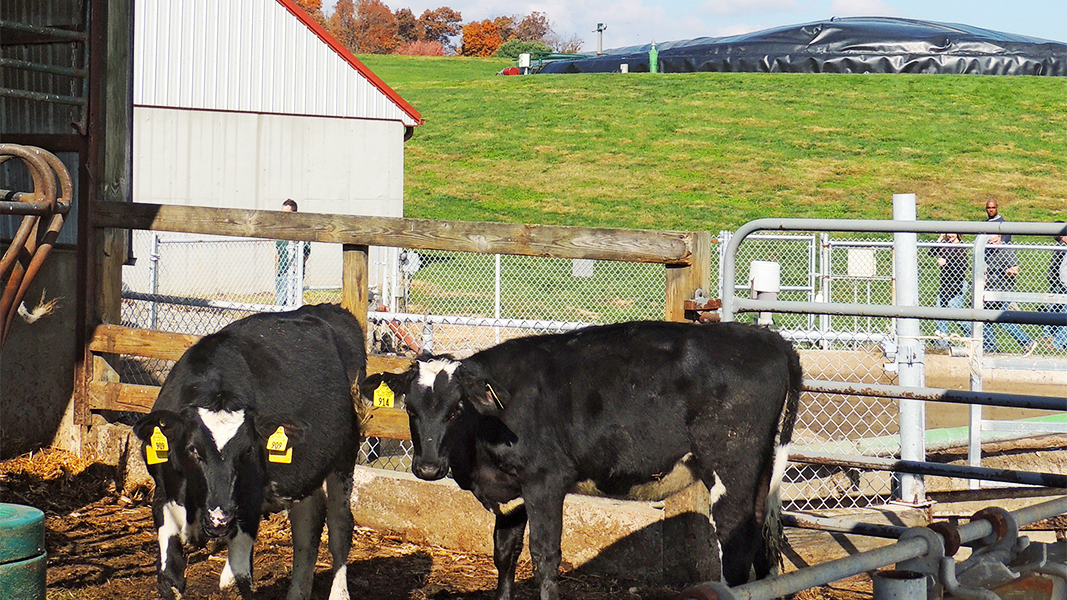Top: Photo by Doug Pinkerton
The combination of state and federal policies establishing biogas-related incentives, new technology innovations, and strong investor interest have combined to create “an exciting time of immense growth for the U.S. biogas industry,” observes Patrick Serfass, Executive Director of the American Biogas Council (ABC) in a Commentary he authored titled “Three Questions for the Biogas Industry.” Serfass notes that with success has come more scrutiny, including these three common questions. The questions and Serfass’ responses are excerpted below:
- Do biogas systems make farms larger? There is virtually no data indicating that installing anaerobic digesters on farms leads to an increased farm size, while the data do show that when there’s farm growth, it’s not triggered by construction of a biogas system … In practice, expanding farms and herd sizes requires years of planning for farmers. The decision to increase a farm’s size has been, and continues to be, driven by food prices, or the consolidation of farms driven by the same factors. Tight farm margins and the low prices for many food products, which are primarily driven by the price consumers (we) are willing to pay, are what cause farms to expand. It is not economical for farmers to raise animals solely for manure production or to grow more crops to increase waste for biogas systems.
- Does biogas production mean gas pipelines have to be used? While biogas does not have to be distributed in gas pipelines — biogas can be distributed as electricity through the electric grid — gas pipelines are an important, low cost and efficient way to transport renewable gases, like renewable natural gas (RNG) and hydrogen, to customers. This infrastructure is already paid for and can help us get to net zero today as we encourage the decline of fossil fuels. When we wanted to decarbonize the electric grid, we didn’t rush to abandon it; we shifted to producing and using more renewable electricity even though fossil fuel electricity is still transported in those lines. The same needs to be done with the gas grid. Plus, making it easy to sell biogas, whether in the form of gas or electricity, makes it easier to build new biogas systems, which are essential organics recycling infrastructure to manage the millions of tons of organic material produced each year in the U.S.
- Have incentives included in the Inflation Reduction Act (IRA) impacted growth in the biogas industry? Yes, but the effect of the IRA on the U.S. biogas industry has just started. Only now that the U.S. Treasury has finished issuing most guidance related to the biogas credits are developers able to integrate the IRA benefits into their development strategies. So, the growth is just starting, but already it’s noticeable. Based on ABC data, we expect the $1.5 billion of new U.S. biogas systems to become operational this year compared to half that much from 2017 to 2020. The IRA gives developers and investors the necessary certainty to plan deployment of capital and better parity among other renewables that has been lacking since at least 2015. With the passage of the IRA, Congress has recognized the essential role biogas systems play in many parts of our society and ABC asks Congress to extend project eligibility beyond the current expiration in 2024 for some biogas-related credits. In 2015, wind and solar got credit extensions for five years, and with the IRA, even longer. Equality is important between renewable energy industries, too.













